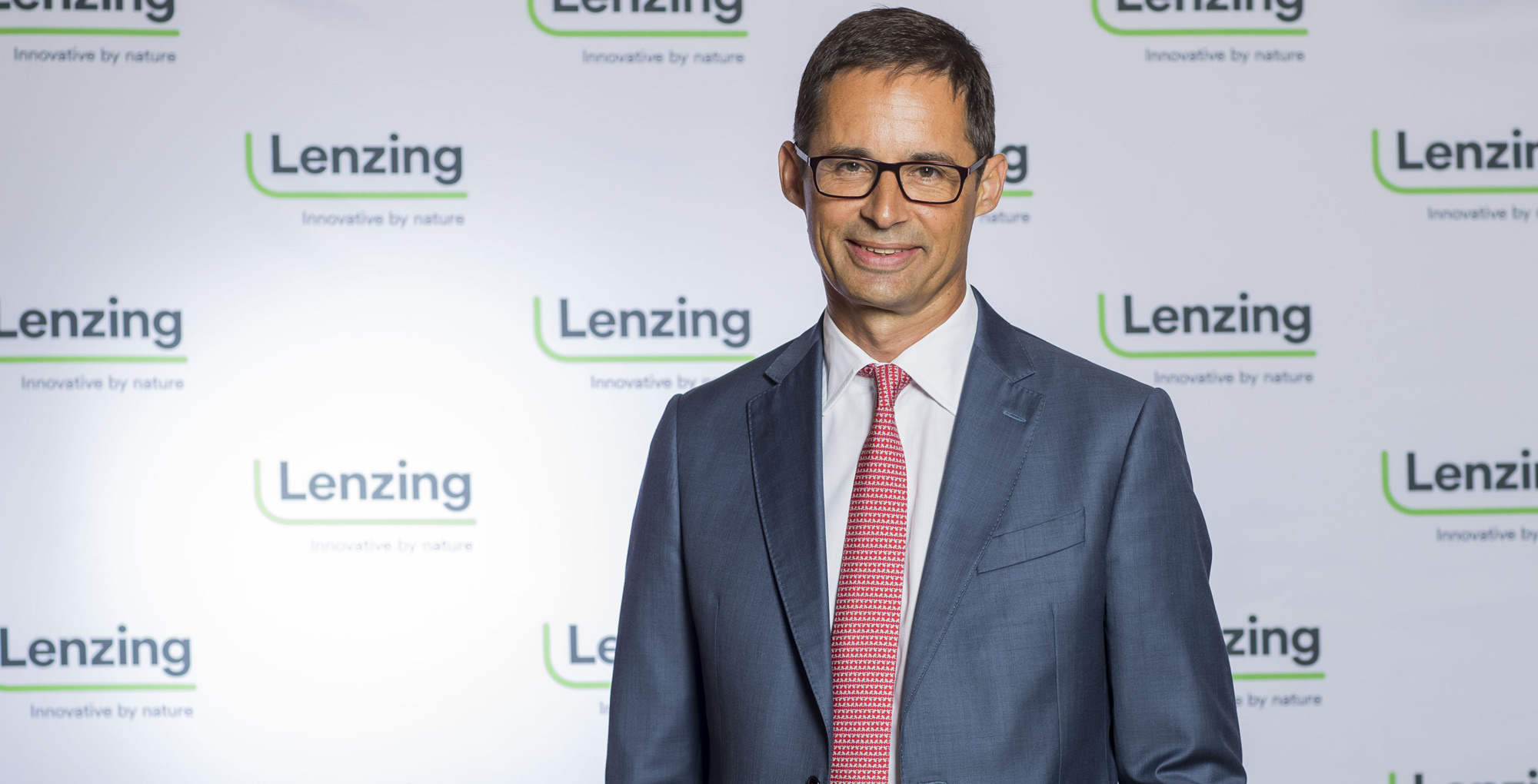
07 Feb Reducing the textile industry’s environmental footprint with wood
Stefan Doboczky, CEO of Lenzing, a world leader in wood-based cellulose fibers, on the importance of sustainability and innovation
Could you introduce Lenzing to readers?
Lenzing is an 80-year-old company and its soul has stayed constant: turning wood into a high-performance, highly emotional and highly aesthetic material that is used in textiles and non-woven applications such as cosmetic face masks. We create products that are useful but also biodegradable and compostable.
The textile industry is bigger than the automotive industry—but it has no answers for its environmental footprint. It is in this environmental arena that Lenzing plays a critical role. Two-thirds of the fibers in today’s textiles are polyesters and polyamides that end up as waste; a quarter of products are made from cotton, which draws environmental concerns; then there is the small section of products where Lenzing is involved—wood-based cellulose fibers.
What are your strategies for future growth?
For us, specialization is the number one priority. We want to reduce the share of commodities, and focus on products that offer substantial value and have a very good ecological footprint. To bring this value to the consumer, it is important that Lenzing works with the whole value chain. Branding is the next important step and a very important element of our corporate strategy. Whereas in the past, Lenzing was a volume and cost-oriented company, it is now a specialty group that draws a lot of positive attention from brands, retailers and consumers. Lenzing is the only company in this textile field that produces in Europe and the Americas—all our competition is in Asia. Our competitors tend to be driven by one strategy: low cost, but our strategy is for innovation and specialization.
Do you see Lenzing as an international company?
A couple of years ago, Lenzing was an Austrian company with international investments. Now, we have developed into a truly international company with Austrian roots. Today, four continents are represented on our extended management team, we have pushed management decisions further into the regions, and have positioned our new innovation centers in Indonesia and Hong Kong.
Lenzing is committed to sustainability and innovation. Could you provide examples of this in action?
Sustainability is our core business and innovation driver—all our investments in research and development (R&D) must have a positive impact on the environment. We have double the R&D spend of any of our peers—we invented Modal, were one of the inventors of Lyocell and now own 90 percent of that fiber’s market share. We recently launched two new innovations: the first is a viscose fiber, ECOVEROTM, which has an incomparable ecological footprint, and the second is TENCELTM Luxe, an alternative to silk.
Austria is the location of the largest integrated pulp and viscose fiber production site in the world. What are the advantages of operating a high-tech R&D-focused business in Austria?
Three things come to mind: firstly, we had to invest in technology in Austria to keep the environment clean, and this investment gave us a head start in mastering processes and technologies that today have become the industry norm. Secondly, the way that our people are educated in Austria, including its apprenticeship system, is excellent. Thirdly, and this may sound strange, we operate in a beautiful environment that offers a fantastic lifestyle, which allows us to attract and retain talent.
How is Lenzing using digitalization?
In our manufacturing processes, digitalization becomes more and more the norm, particularly for preventative maintenance or remote operation of plants. Strategically, the most important aspect of digitalization is in the traceability of the supply chain. The question is, how can a super-complex textile supply chain work—where thousands of producers sell to thousands of spinners who sell to hundreds of thousands of weavers and knitters who then sell to brands and retailers—how can the consumer know where the product came from? There lies the importance of blockchain technology, and this is where Lenzing is already innovating and researching.

